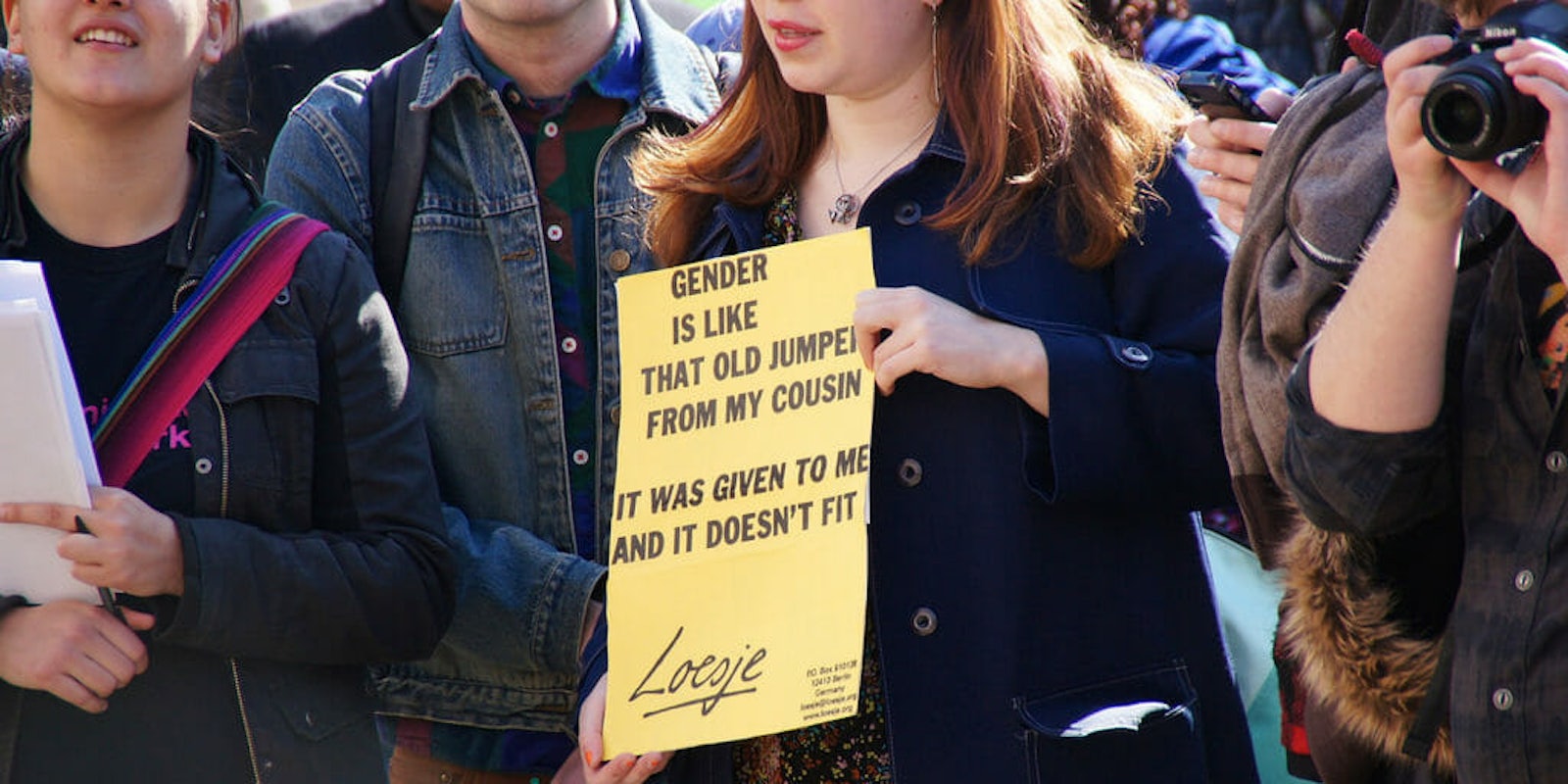by Serena Sonoma
I am a 24-year old transgender woman, and I know gender dysphoria very well. My distress over my physical body, my feeling that it doesn’t always match up with my gender identity, often lurks in some far corner of my mind. It doesn’t matter how well I’m dressed, how much I brush my hair, how many compliments I receive, or how well my hormone therapy treatment is working. When gender dysphoria hits, it packs a punch.
It can come while I’m in the middle of reading a book, a sudden unsettling feeling of not being quite myself. Maybe I recognize that my hands are too big, as I flip to the next page. Maybe I study every part of my face after I shower and clear the foggy mirror, wishing some features were softer and others not quite there.
Gender dysphoria, for me, is amplified the most when it comes to my body image. As a transgender woman, my body is conditioned by society to look a certain way. Maybe my breasts could be a little bigger, my voice a little more lilted, my hips slightly wider. It also goes beyond the scope of just physical traits—forms of micro-aggressions can also trigger gender dysphoria.
Obviously, gender dysphoria is not something cisgender people, those who identify with their assigned gender, often understand or experience. They don’t know what it’s like to go for a casual walk and worry about whether you look presentable enough so not to be faced with transphobic street harassment. Or to worry about how cis-passing you look for a job interview before ever thinking about the interview questions.
For me, gender dysphoria has always been the most complicated issue to explain to family and friends who won’t quite get why I don’t like wearing this particular lipstick, or why I get sudden feelings of uneasiness. All of these things can sound like tedious insecurities but mean so much more on a larger scale of being transgender.
To close the gap of understanding for transgender, non-binary, and cisgender people, I interviewed 9 transgender and non-binary people on what it is like living with gender dysphoria. Narratives for us are always diverse; we are not all exactly alike, and therefore gender dysphoria can manifest for different people in different ways.
What does gender dysphoria feel like?
1) Leo, 25, He/Him/His
“My dysphoria is raging all the time,” Leo tells the Daily Dot.
For Leo, gender dysphoria conjures pain. It’s disappointing, and it makes him feel like he’ll never be whole. “It mostly comes up during intimacy with my girlfriend because I want to know what it feels like to be inside the person I’m in love with,” said Leo, who’s been on testosterone for three years. “It makes me sad.”
Leo also said dysphoria also presents itself a lot in public restrooms, which is a constantly stressful—especially living in a conservative part of Philadelphia.
Leo says most of his friends are cisgender, “so it’s challenging.” For self-care, Leo feels like he doesn’t do enough. “Isolation is such an issue,” he says. “When I hear that someone else’s reality is similar to my own, it reminds me that I’m not alone, and that there are tangible ways to cope and share perspectives.”
Despite his isolation, “silence is never the answer,” Leo says, telling other transgender and non-binary people: “Please find someone to talk to if you can safely do so.”
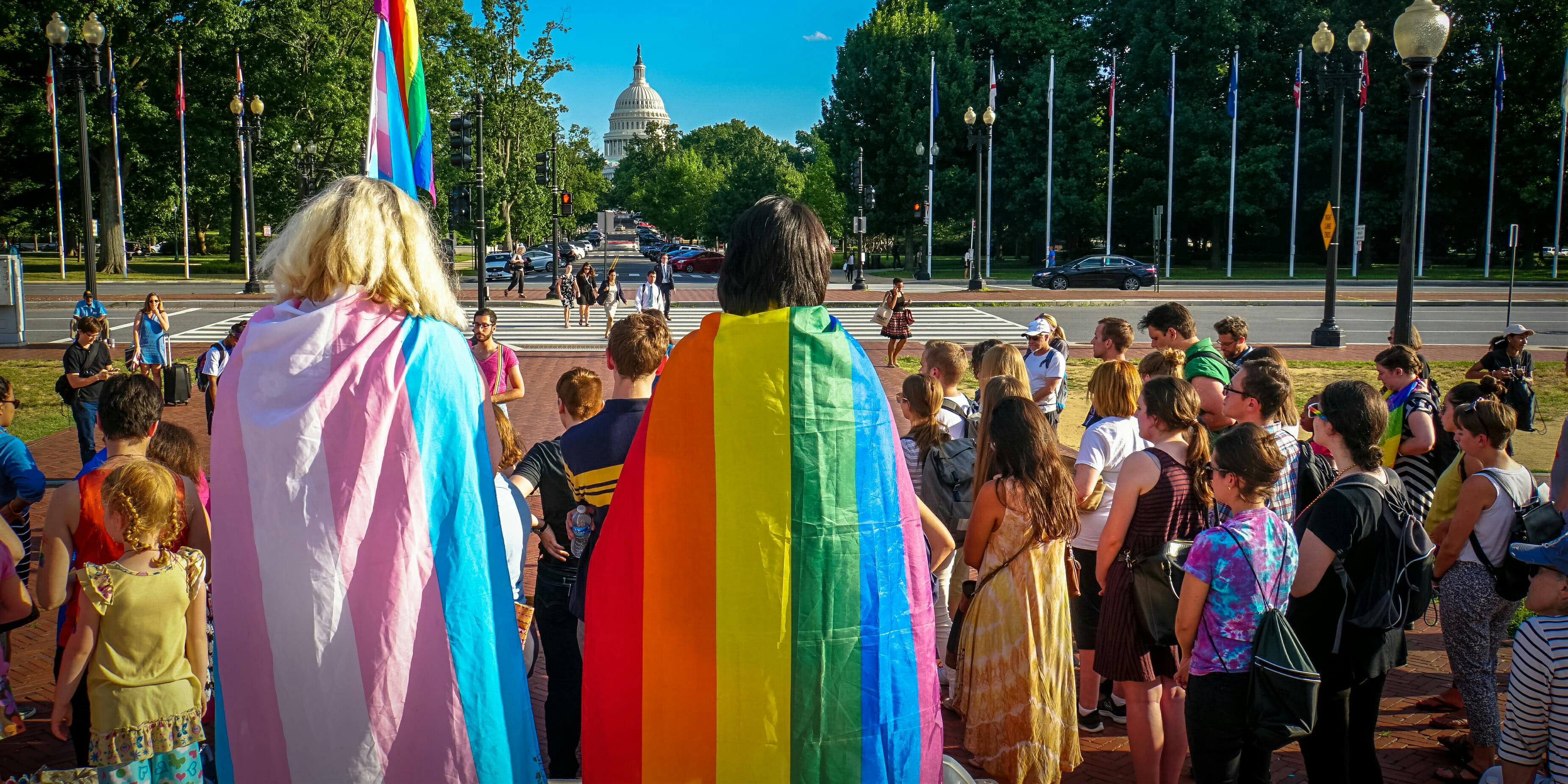
2) Megan, 31, She/Her/Hers, They/Them/Theirs
Megan was born and raised in North Carolina, notorious for anti-trans bathroom bill HB2. “I realize my state has a long way to go with LGBTQ rights, but despite the rebuttal against us, I am just now beginning to fall in love with this area,” she tells the Daily Dot, noting that her county unanimously voted against both the bill and former governor Pat McCrory.
Megan, who identifies with a non-binary expression, says her gender dysphoria began in childhood. “Before I hit puberty, everything was fine. I could dress more masculine and people would accept that and say, ‘Oh, she’s just a tomboy.’ I knew back then I was different. I was beginning to grow breasts, I hated them. They were always in the way of the type of clothes I liked to wear.”
She laughs as she says they still get in her way today, but she has learned to accept it as part of her dysphoria. Choosing between female and male wasn’t a choice Megan wanted to make. “Not only was I angry about my feminine gender expression,” says about her childhood, “but I wasn’t particularly sure I wanted to be considered masculine either. I just wanted to be me. I thought being a boy meant I would have privileges such as going shirtless outside, not experiencing menstruation and being allowed to date girls. So in my head, I contemplated being a boy rather than a girl, but as a fluid person, I now realize I have the freedom to express femininity, masculinity or none at all, and it is all valid.”
Megan believes people need to stop concerning themselves with transgender and non-binary people’s labels to determine whether to respect someone. “Appearance and gender should not come into play when deciding whether or not to treat others with decency.”
3) Ty, 21, He/Him/His
Ty makes YouTube videos documenting his transition. “I love being able to share my life, connect with people, and help others along the way!” he tells Daily Dot. Ty is also a fitness enthusiast and he’s currently in the process of becoming a certified personal trainer so that he can help other transgender men, like himself, who want to get in shape and feel more confident about their bodies.
For Ty, gender dysphoria feels like trying to dig yourself out of a hole with your hands tied behind your back: trapped and hopeless.
“Imagine you park next to someone who had the same car as you at the grocery store,” he says. “You come out with your groceries, load them all up, and get in the car. Then you look around and realize you don’t recognize any of the stuff that’s in the car. There are different air fresheners, a water bottle in the cup holder that’s definitely not yours. Oh, snap! You’re in the wrong car. You’d probably get out as fast as possible, feeling confused, and a little embarrassed. And you can’t get out of the car because it’s going like 80 mph. And you’re not driving. Also, the car doesn’t have doors. You’re stuck in the car forever until you die. That’s what dysphoria is like.”
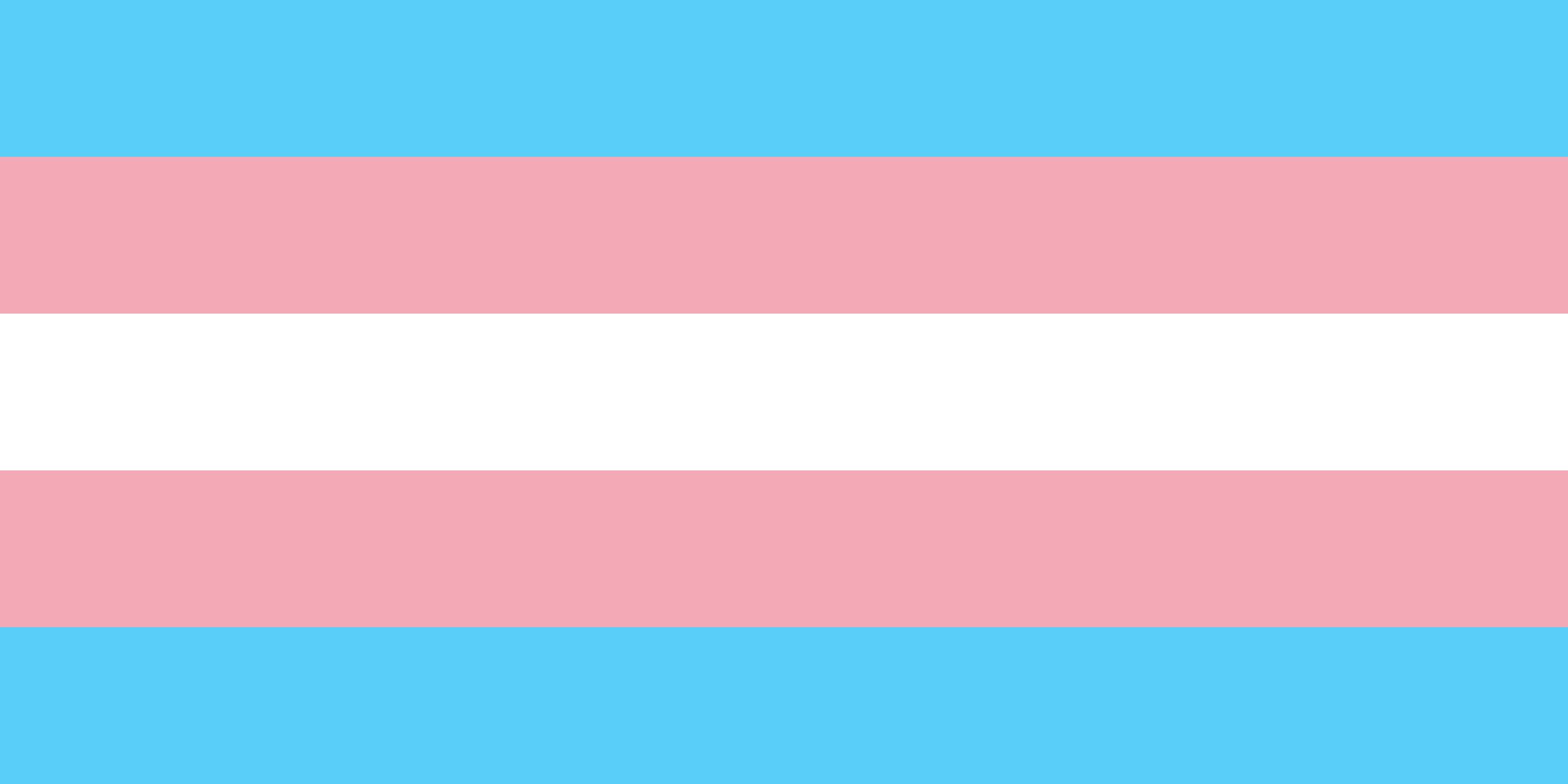
Ty says that the hardest part of his transition was the beginning. After he came out, he had a long waiting period before he could start hormone replacement therapy (HRT). Waiting for testosterone was a challenge because he knew exactly what he needed to ease his dysphoria but wasn’t able to obtain it without jumping through endless hoops. But he also knew he would get there someday, so he tried to do things that could help him feel better about himself, including watching other transgender men on YouTube who had documented their transitions.
“It really helped me feel like I wasn’t alone and had a lot to look forward to,” he says. “I think that anyone who is struggling with dysphoria should know that they aren’t alone and, if possible, find an outlet to express their feelings and role models they can look to.”
4) Ethan, 31, Xe/Xim/Xyr//Xemself, They/Them/Themself
Ethan is agender—without gender, and hence not on the gender binary. As a community-taught comic artist and illustrator from Texas, Ethan’s work centers around life at the intersections of being Black, queer, non-binary, and transgender. “I’ve been aware that I am a non-binary trans person for a little over two years now, and it’s been one hell of a ride,” Ethan tells the Daily Dot. “And there’s lots that I am learning and unlearning about myself and our community.”
For Ethan, gender dysphoria feels many different ways at many different times. “The best way I can describe it is that it feels like I’m wearing clothes that are simultaneously too small and soaking wet. There is no comfort in that feeling it often leaves me feeling helpless when it comes to figuring out ways to navigate the world of fashion and presentation.”
For self-care, Ethan focuses mainly on doing things that help xim (the gender-neutral version of “him” or “her”) feel more in touch with xyr gender—or lack thereof, so it’s difficult for xim to find affirming ways to engage with a lot of traditional self-care practices since many seem rooted in gender.
Regardless, Ethan enjoys taking long hot baths with all xyr favorite oils and herbs. “It really helps when I can love on my body as it is and show myself that it’s okay to exist in the body that I have currently while awaiting newfound changes that might occur on HRT or with any gender-affirming procedures.”
Xe says it would be nice to be able to exist in a world where binding, tucking, HRT, surgeries, and their ilk don’t matter when it comes to respecting and validating non-binary people’s lives.
“Do what you can and know that it is enough,” Ethan says to others struggling with gender dysphoria. “Do nothing and know that it is enough. It’s hard and painful and very uncomfortable. But please keep being as true to yourself as you can, and understand that the visible, vocal trans and non-binary people in this world have your back. You can confide in us. We want to keep you safe too.”
READ MORE:
- The dirty, complex, empowering history of the word ‘queer’
- What it means to be transgender
- The pride and pitfalls in LGBTQ labels
- How big is the transgender population, really?
5) Sarah, 28, She/Her/Hers
Sarah is a 28-year-old disabled transgender woman. She came out in 2008 and has been on hormone replacement therapy for the past 18 months. Gender dysphoria for Sarah feels like being completely alienated from her body.
“I’ve only felt safe enough wearing ‘girl clothes’ outside of the house since I’ve been on hormones,” she tells Daily Dot.
Sarah, who feels most comfortable in gender-affirming attire and with trans folks, says it’s good for others suffering from dysphoria to find other transgender people to talk to and share their experiences with.
“If it’s possible, build a network of emotional support through people you meet online and people in your circles you are sure you can trust without the risk of being outed,” she says to those still in the closet.
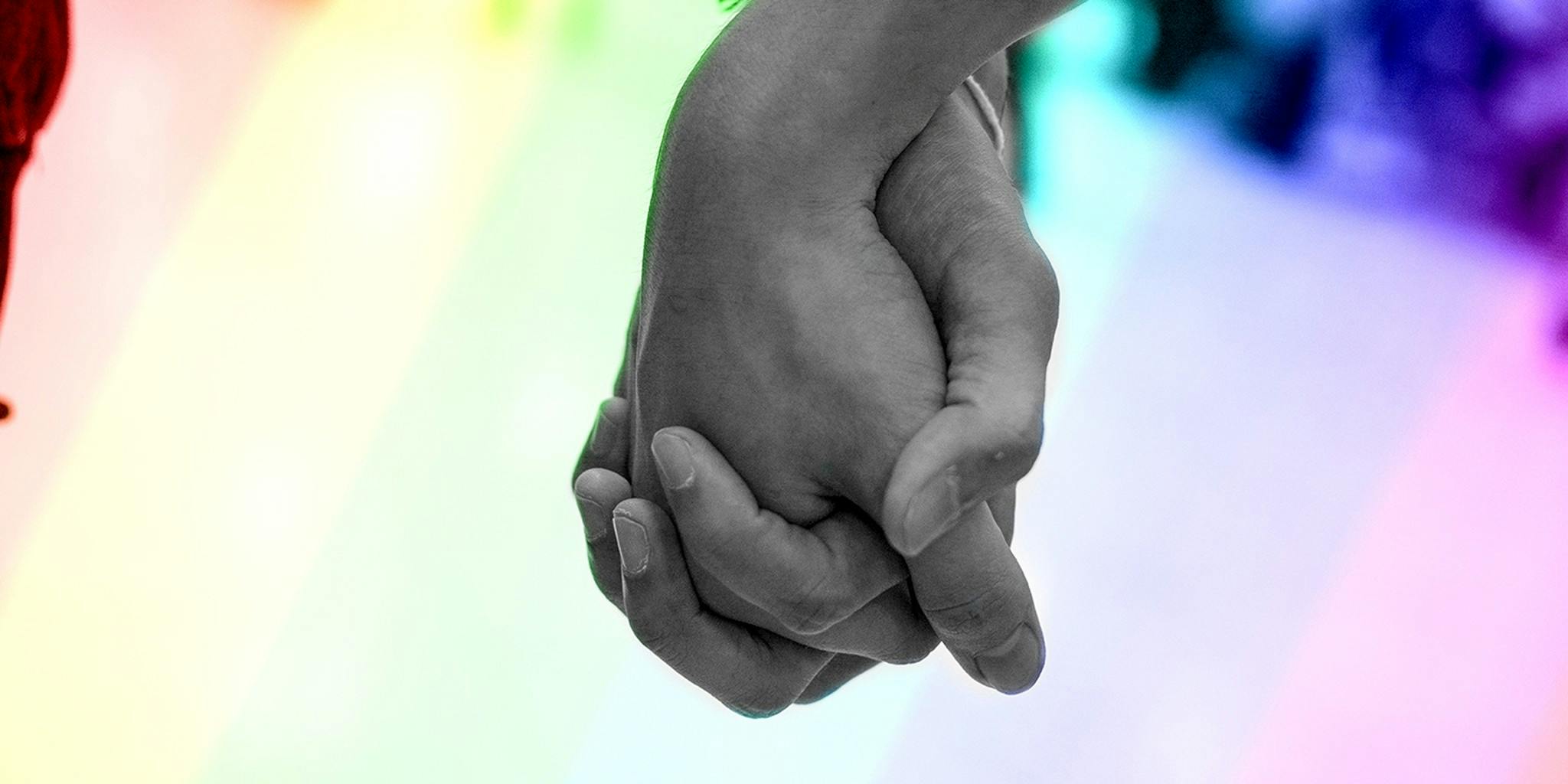
6) Harmony, 25, She/Her/Hers, They/Them/Theirs
Harmony is a writer and transgender woman of color born in New York. For Harmony, gender dysphoria feels like an incessant panic attack and intense self-loathing wrapped into one. She adds that “even with the description that I just gave, it’s impossible to really put it into words—that’s how painful it is.”
For help with her dysphoria, Harmony turns to writing for fun. She reads and she makes an effort to avoid the things that trigger her. “It’s really hard, though,” she tells the Daily Dot. “Honestly, I also eat. But that’s not a very good self-care thing. It’s better than my old negative coping methods, though.”
Harmony says gender confirmation and top surgeries should be easier to attain if trans people want them. She believes we should be able to have these resources without jumping through hoops that cis people never have to go through.
But when it comes to coping, she is grateful for her art for getting her through the rough spots. “Discover something you love and put your all into it,” she says.
READ MORE:
- 8 out and open transgender celebrities you should know about
- The difference between being polyamorous and being sneaky**
- 5 dating apps for queer women without any of the bulls**t
- The best dating apps for every type of relationship
7) Nikki, 27, She/Her/Hers
Nikki is an admin for Transmission Gaming, a gaming discord with a membership around 500 gamers who identify as trans.
Dysphoria has always been kind of insidious for Nikki: “It wears me down over a few days and kind of culminates in this intense feeling of self-loathing, body hatred, and generally feeling ‘slighted.’”
Nikki, who’s been on HRT for about four and half years, says her dysphoria used to be terrible. Before her transition, she was dealing with the guilt of “living a lie” every single day. She says drugs nor alcohol could solve her problem—the only remedy was her eventual transition, and even then, she still deals with dysphoria. But she says it’s nowhere near as bad as it used to be.
For self-care, Nikki says she has always found it helpful to hang out with other trans people and play games together. “Being social, even online with other trans people has this really soothing effect where I don’t feel put on the spot, or like I have to perform for a cis crowd who always seems to make me feel like I’m not meeting expectations of femininity.”
Sometimes Nikki will also dig up old photos of herself and compare them to recent ones to appreciate how far she’s come. She says HRT has done some pretty incredible things to her appearance, but sometimes it’s hard to tell that anything is different because the changes have happened so gradually.
“I always tell people just starting HRT to take as many photos as they can because one day they’re going to feel depressed and dysphoric and they won’t be able to see the changes and they’ll think maybe nothing has changed at all. But they can always go back to the photos and prove to themselves that so many things have changed for the better. Nothing is quite as surreal as appreciating the changes and understanding that no matter what happens in society, your personal self is finally free and capable of growth and worthy of love.”
8) Saje, 34, She/Her/Hers
Saje, a transgender woman who works in IT in New York City, says she is trying to understand the fundamental difference between insecurity and gender dysphoria—being comfortable not just with the body you have but the form of the body you have.
When speaking with Saje over Skype, she led me to the realization that gender dysphoria can be experienced by anyone, not just transgender and non-binary people. “People used to chemically castrate gay men with what is essentially HRT, they would grow breasts,” she told the Daily Dot. “They would commit suicide due to gender dysphoria.”
To get through the tough times, Saje says she relies on the help of her partner, who’s gender fluid. But even if you don’t have that intimate partner support and understanding, Saje says trans and non-binary people can find resources online like on Reddit, and in physical spaces like LGBTQ centers.
9) Oisín, 20, They/Them/Theirs
Oisín, who’s been out as non-binary for two years, is a 20-year-old college-dropout-turned baker. They also work at a summer camp. “I’m blessed to get to connect with trans kids there. They mean the world to me and keep me coming back,” they said.
Oisín can relate to what those kids are going through, as they also still deal with gender dysphoria. “It depends on what it is that day,” they tell Daily Dot. “Sometimes it’s my voice, other times it’s my body itself. It’s the feeling of being trapped and imprisoned in something you didn’t choose and did nothing to deserve. It’s reinforced every time I get misgendered.”
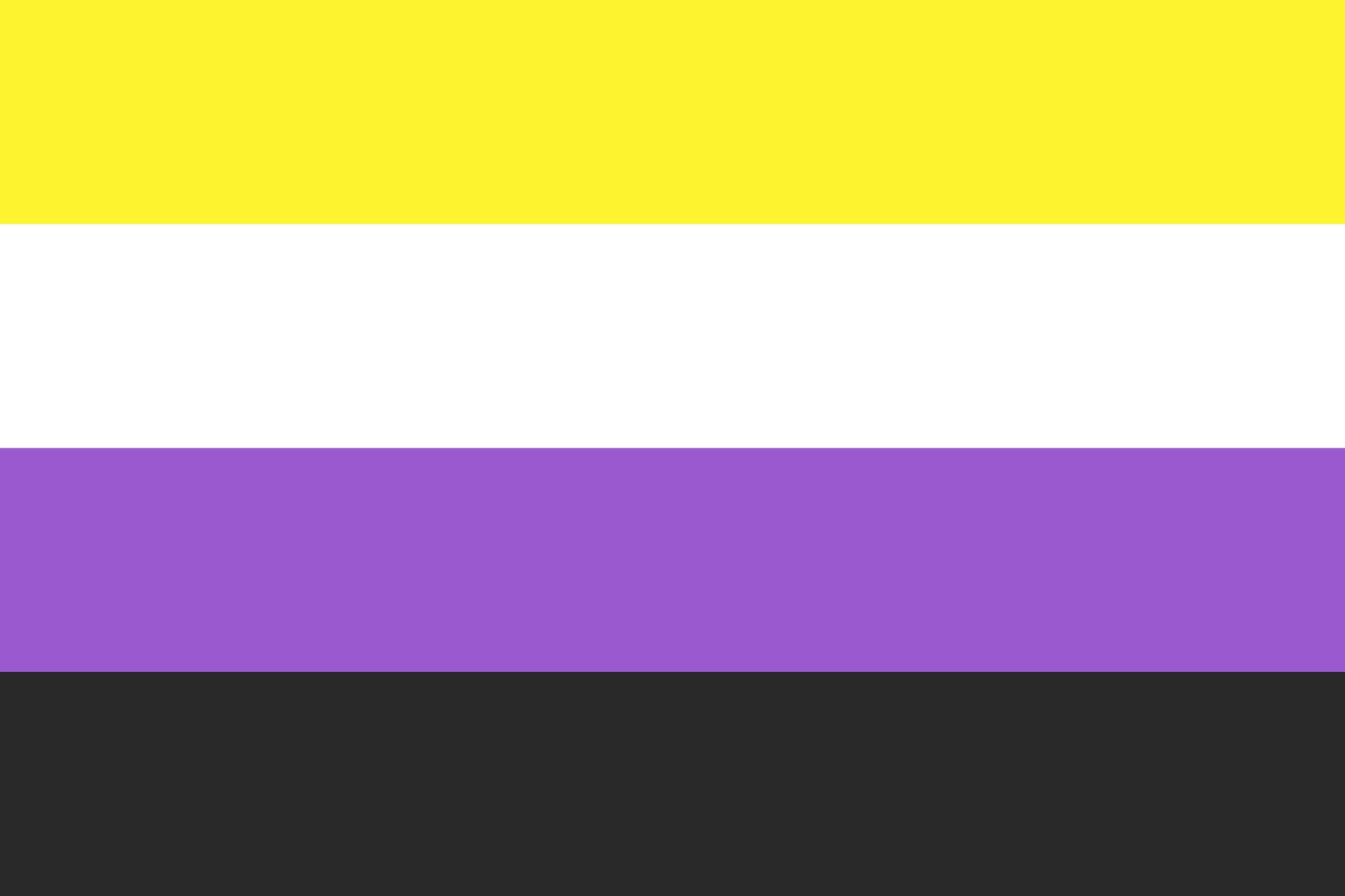
Oisín also enjoys sewing, which they use to escape their dysphoria. At 5-feet-tall and a size XL/XXL, they said it’s hard to find something in stores that feels good and fits and represents their identity. They want to sew clothes to fit other people’s bodies who may be suffering from dysphoria or going through HRT, which often comes with major body changes.
Ultimately, Oisín wants to validate for others how much “it fucking sucks” to deal with gender dysphoria.
“It sucks so hard and I’m sorry that anyone ever has to feel this way,” they say. “I try to, at least once per day, thank my body for doing good things—pumping blood, breathing air, hands that craft things and a brain that has wonderful ideas. Also, remember to take comfort in each other—trans people are often the only people that other trans folks can count on. Each one of our bodies is perfect and beautiful, no matter how flawed they are perceived.”
10) Esperanz, 22, She/Her/Hers, They/Them/Theirs
Esperanz is a queer brown transfeminine Xicanx, studying Chicana/o Studies at the University of California Davis. She says gender dysphoria hinders her ability to do anything—meaning if she doesn’t feel satisfied or even happy with the way she’s feeling toward her body, presentation, and appearance, she will really dig herself into a hole of negative thoughts and shut down completely.
“Sometimes all I need to hear is ‘Your makeup is so good’ and my day will be made into a much more positive one,” Esperanz says. To hype herself up, she plays femme-affirming music and looks in the mirror and says, “Wow, I’m so damn beautiful. These cheekbones! That natural glow! Yes, bitch!!!”
More often than not, Esperanz says it’s strangers on the street that contribute to her dysphoria, whether it’s misgendering her or looking at her too often. She wants society to respect people and let them live their own lives. Compliments are OK, she says, but even those can be backhanded. For example, a woman saying, “You’re better at makeup than me!” implies that her makeup skills are so amazing for someone who is not a “woman.”
“Society tells queer/trans/non-binary people that we aren’t beautiful, that we aren’t lovable. So I say, ‘Fuck that,!’” she says. “But being honest, gender dysphoria can be so much—especially alone. If you have the privilege, please surround yourself with those who continually love and support you. Reach out if you have the capacity.”
Editor’s note: This article is regularly updated for relevance.

